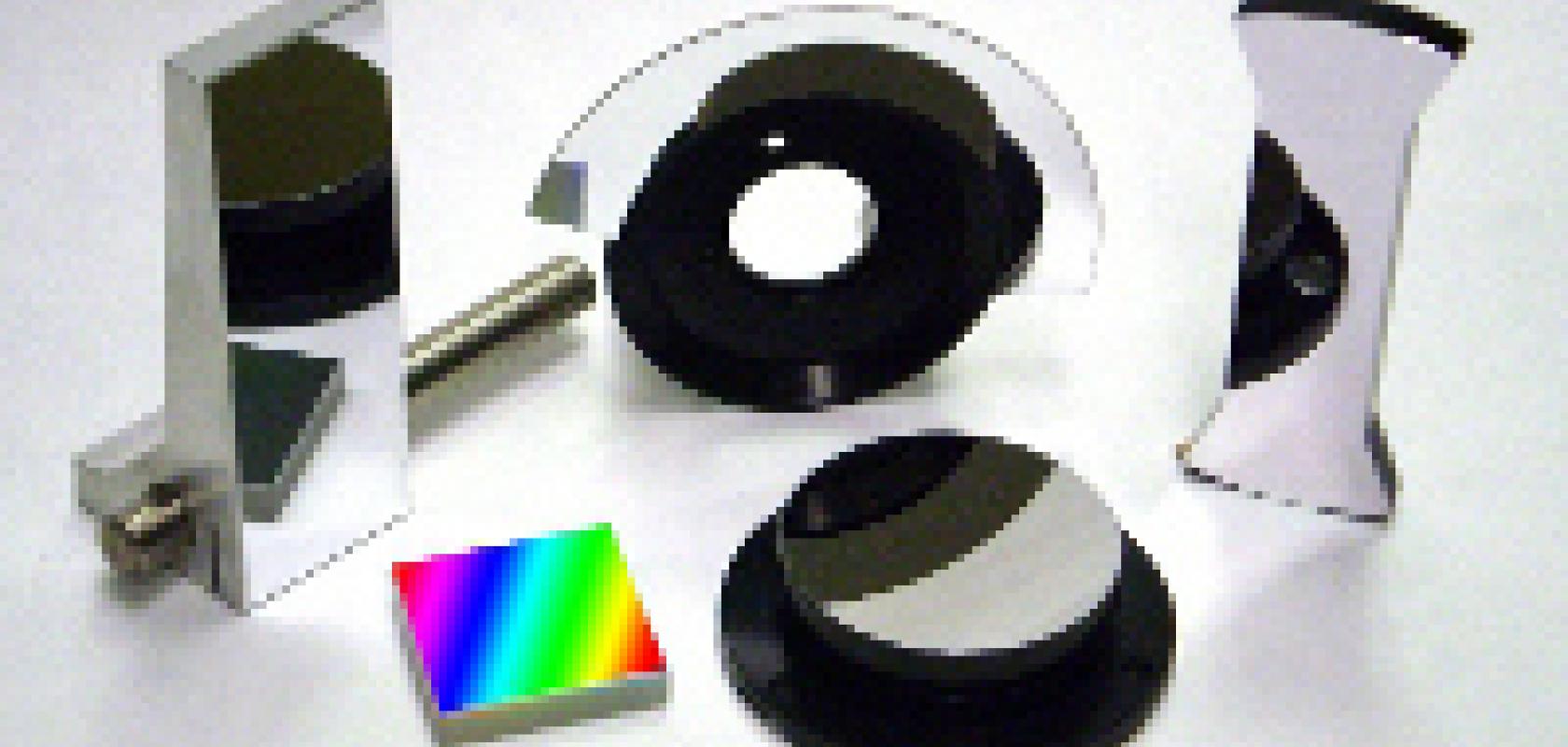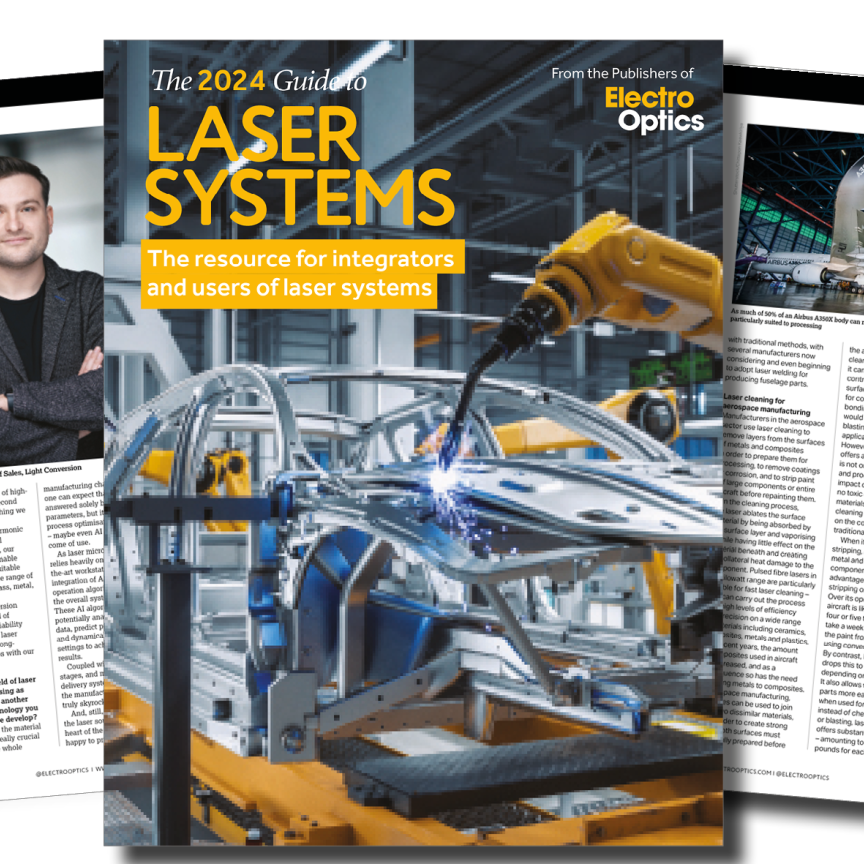Replicated Optics Offer High Quality at Affordable Cost

Overview
Replicated Optics achieve high optical accuracy and tolerances while realizing numerous benefits, particularly lower costs and reduced complexity. Suited to applications requiring anywhere from only a few, to hundreds or even thousands of precision optical components, Replicated Optics include mirrors of nearly any surface shape or amplitude gratings, and with a range of coatings and substrates.
The replication manufacturing process produces components with a fraction of the processing time compared to conventional grinding and polishing, yet retains the high accuracy associated with grinding and polishing. Furthermore, replicated optical components can often incorporate their own mounting holes and tabs, an additional source of significant cost, size, and weight savings for OEMs.
The result is higher light management quality for the cost, and the potential for reduced system weight, improved optical system stability, smaller system volume, placement of optics in tightly constrained spaces, fewer unique parts, and faster system assembly than any other available technology.
Benefits of Replication
- High optical precision, surface accuracy, repeatability, and quality at a lower cost
- Capability for integrated mounting holes and tabs in the final replicated optical components, reducing installation time, alignment time, and complexity / unique parts count
- Potential for weight / inertia reductions, producing higher optical system performance
- Fewer parts so fewer part-to-part interfaces that can go out of alignment due to thermal cycles, mechanical shock, or vibration, resulting in better system reliability
- Opportunity for better matching of the replicated optic’s substrate to the systems, resulting in better performance under varying thermal conditions
- System size reductions through more compact optical subsystems
Examples of cost savings
1. Mirror for collimating
A 150mm (6”) diameter off-axis parabolic (OAP) mirror is required for collimating the light path of an IR light source. 50 mirrors are required.
$20,000 – First mirror unit, used for design verification and as the replication master.
$3,000 ea. – Replicated mirrors.
Total cost without using replication: (50) machined and polished units at $20,000 each = $1,000,000.
Total cost using replication: (1) machined and polished master unit at $20,000 each, (50) replicated units at $3,000 each, total cost = $170,000.
Savings using replication: $830,000.
2. Mirrors for optical scanners (galvanometer)
Optical scanners for laser process equipment often redirect high power laser sources and require a high degree of flatness. Beryllium or Silicon Carbide (SiC) substrates are typically used to minimize inertia, producing the fastest processing times where this is important such as laser marking. Manufactured in quantities of 20-200 units, the replication process can be used to make 'batches' of these smaller, flat mirrors without having to polish and coat all of the individual substrates. The result of using replication is typically a 30% savings over conventional processing of galvanometer mirrors.
Savings using replication: 30%.
Applications
Optical systems that benefit from incorporation of replicated optics come from a wide range of industries and optical system types, using both visible light and laser sources. Examples are:
Mirrors – aspheric, flat, toroidal, parabolic, off-axis parabolic, spherical
- Spectroscopy
- Semiconductor stages for use with interferometers
- Optical scanners / galvanometers
- Metrology
- Components in Unmanned Vehicles
Diffraction Gratings – ruled, holographic, Eschell, dual wavelengths
- Biometric analysis – wavelength filtering
- Fluorescence detection
- Mass spectrometers
- Spectroscopy
Mirrors can be made from 2mm to 500mm diameter in a wide range of shapes with optical surface accuracies of Lambda/10 and surface quality of 20-10. Diffraction gratings can be produced in sizes up to 110mm x 110mm with groove densities from 40 g/mm to 3600 g/mm, and wavelengths from the deep UV to the far IR.
In many cases, particularly for flat mirrors and diffraction gratings, companies that fabricate precision optics using replication will have a substantial selection of masters on hand. The savings of using an on-hand master can be thousands or tens of thousands of dollars.
Types of Optical Components Suited for Replication
Optics may be fabricated using replication for the following application types and shapes:
- Reflective
- Ellipsoids
- Hyperbolides
- Toroids
- Spheres
- Simple or compound aspheres
- Elliptical and parabolic cylinders
- On and off-axis sections of the above
- Flat surfaces
- Retroreflectors
- Transmissive Optics
- Light Beam Displacement Optics
Substrate Materials:
- Glass
- Zerodur
- Silicon carbide
- Ceramic
- Metals such as beryllium, aluminum, titanium, stainless steel, and others
- Graphite
Coatings:
- Reflective metal coatings – enhanced aluminum , silver, protected silver, or gold
- Reflective dielectric coatings and hybrid metal / dielectric coatings

How the Replication Process Works
Once the optical design for the OEM application is tested in prototype systems and finalized, replication begins with manufacturing of a 'master'. The master is produced using typical machining, grinding, and polishing techniques. With the exception of replicating flat surfaces, the master is actually a negative of the final component since replication is a copying process where the final parts are made using the master as a tool.
The master is then tested and qualified to confirm that parts made from it will meet the requirements of the application. Surface accuracy and radii must be certified to customer specifications using a laser interferometric measuring system, profilometer, or other measuring system depending on the optic configuration.
Once the master is validated, the master is first coated with a release agent to enable easy separation of the replicated component at the completion of the process. Next, any coatings that are required on the final part are applied, followed by the reflective layer. Lastly, a film of engineered epoxy is applied to either the master or the replicated component and the parts are joined for permanent adhesion. After the epoxy cures the replicated part is separated from the master.
The essential features of the replications process are:
- Suited to volume production (many parts from one or a few validated masters).
- Substrates do not require a precision machined surface because the epoxy layer accommodates machining imperfections; the final surface matches the master.
- Substrates can have built-in mounting holes, tabs, and unusual shapes to streamline assembly, minimize weight / inertia, and reduce unique parts count.
Limitations
Temperature
The principle limitation of replication compared to conventional production methods is the application temperature. Since the epoxy used to create the replicated optic shape has a limited range, typically replicated optics can be used in systems that are limited to application temperatures in the range of -40°C to+125°C. Using replicated parts in hotter applications is not possible. Also, the upper temperature limitation of the epoxy can limit the range of possible optical coatings since some types of coatings require coating chamber processes above +125°C.
Aspheric Lenses
Applications requiring aspheric lenses will require conventional manufacturing methods as replication is not feasible for these components.
Summary
When precision optics are required and unit volumes are a few or more, optical replication often brings major cost savings along with size reductions, faster assembly, reduced parts count, and potentially better optical system stability through inertia reductions and simplified optical component mounting structures.

